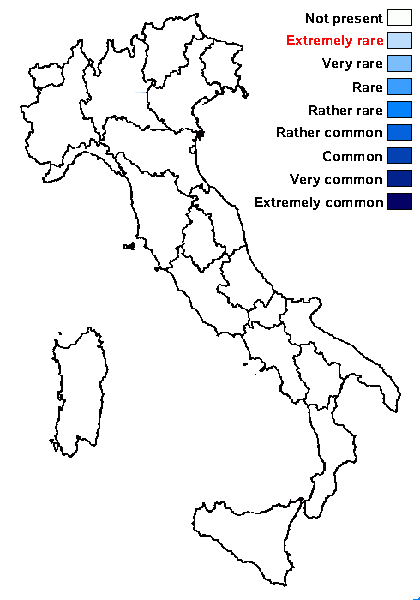Staurothele fuliginea Zschacke
Rabenhorst's. Krypt.-Fl., 2nd ed., 9, 1.1: 508, 516, 1934.
Synonyms:
Distribution:
Description: Thallus crustose, episubstratic, continuous to usually cracked, dull sooty black, rough and pulverulent, sometimes delimited by a sooty prothallus. Perithecia blackc.0.25 mm across, immersed in 0.4-0.5 mm wide, conical-hemispherical projections with a brown to black apex, half to almost completely covered by a thalline layer, the projecting parts often minutely warted. Involucrellum adpressed to exciple or slightly divergent in lower part, most often apical; exciple brownish throughout; hymenial gel I+ red (I+ blue at very low concentrations of iodine), K/I+ blue; hymenial algae globose to subglobose, 3-5 µm wide; hamathecium of periphyses and periphysoids, interascal filaments absent. Asci 2-spored, clavate, the wall thickened above, with an ocular chamber, after dehiscence with a delicate extruded endotunica, I-, K/I-. Ascospores muriform, long remaining hyaline, finally pale to medium brown, ellipsoid with rounded ends, 42-57 x 17-23 µm. Pycnidia black, frequent, Dermatocarpon-type. Conidia bacilliform, straight or slightly curved, 3-4 x c. 1.2 μm. Photobiont chlorococcoid, present in both thallus and hymenium. Spot tests: K-, C-, KC-, P-, UV-. Chemistry: without lichen substances.Note: a very poorly known species related to S. fissa, described from the Rhaetian Alps and also known from the French Pyrenees (Roux & al. 2025). The type material was collected on granite in a rather dry situation. To be looked for in the Italian Alps.
Growth form: Crustose
Substrata: rocks
Photobiont: green algae other than Trentepohlia
Reproductive strategy: mainly sexual
Poorly known taxon in need of further study

Predictive model
Growth form: Crustose
Substrata: rocks
Photobiont: green algae other than Trentepohlia
Reproductive strategy: mainly sexual
Poorly known taxon in need of further study

Predictive model

